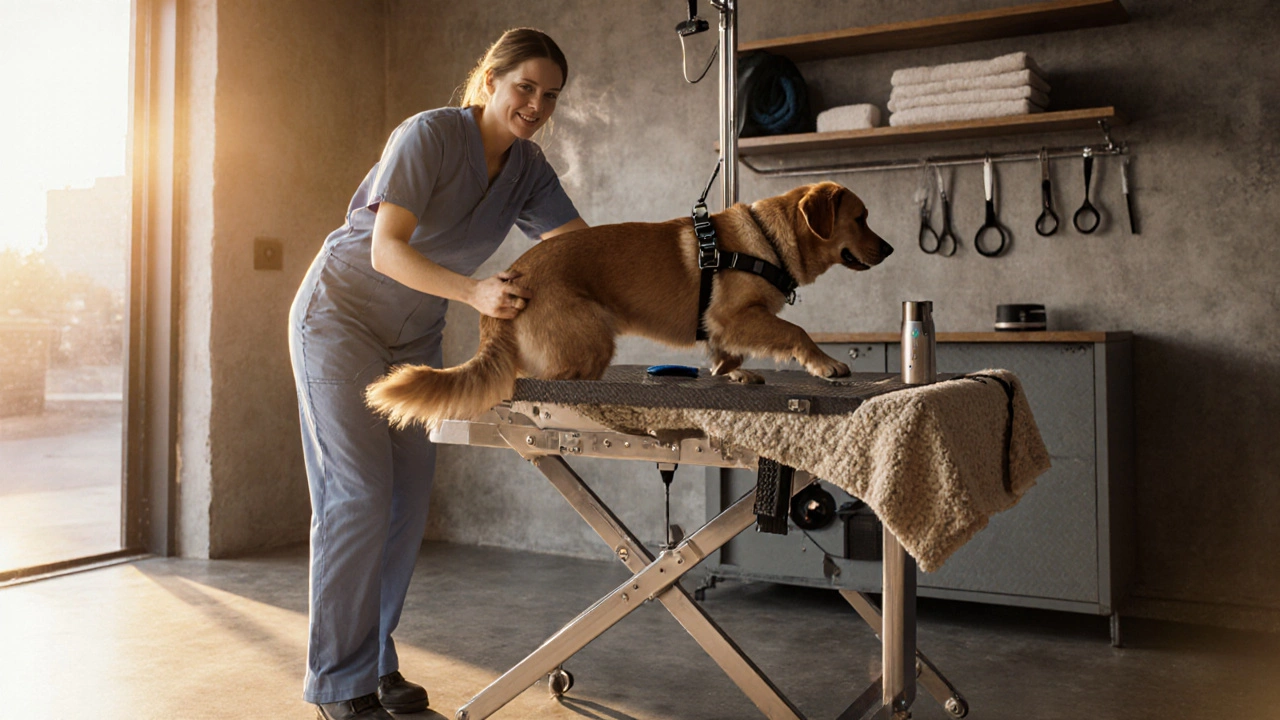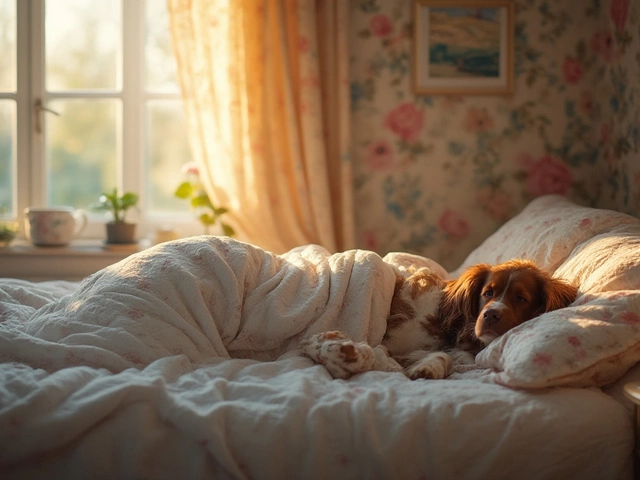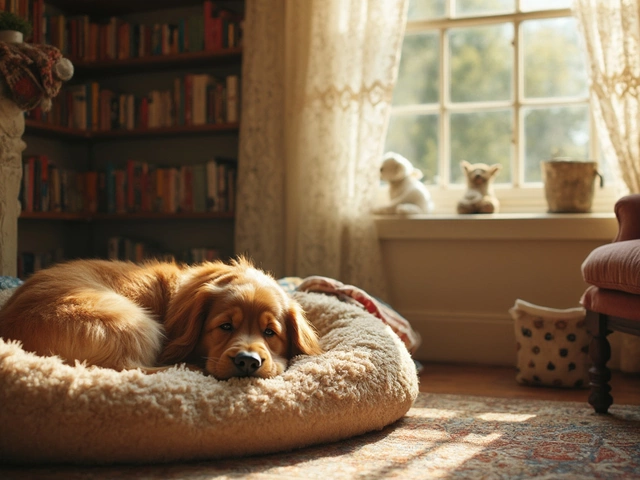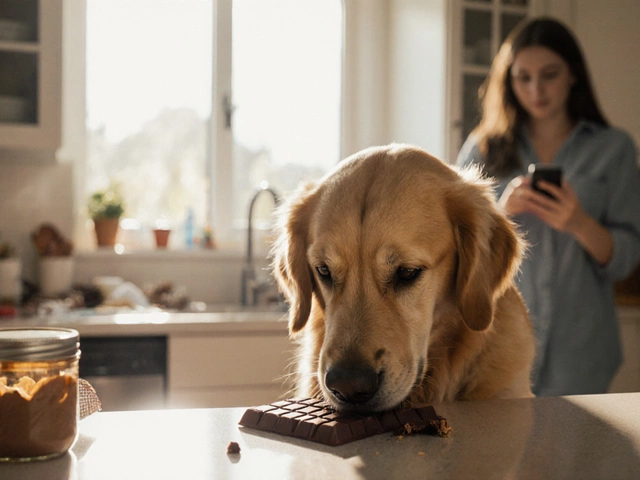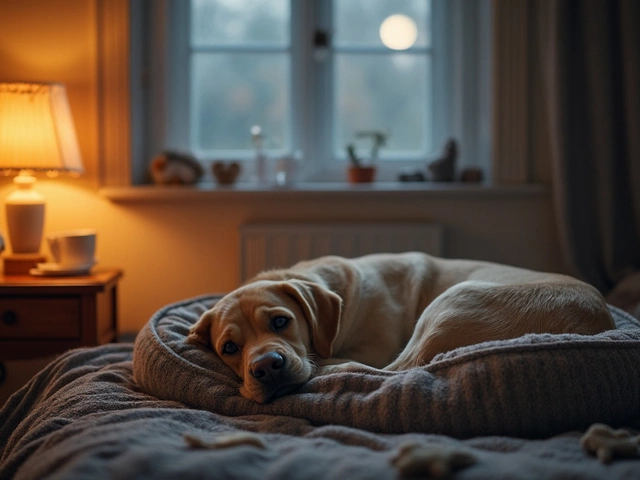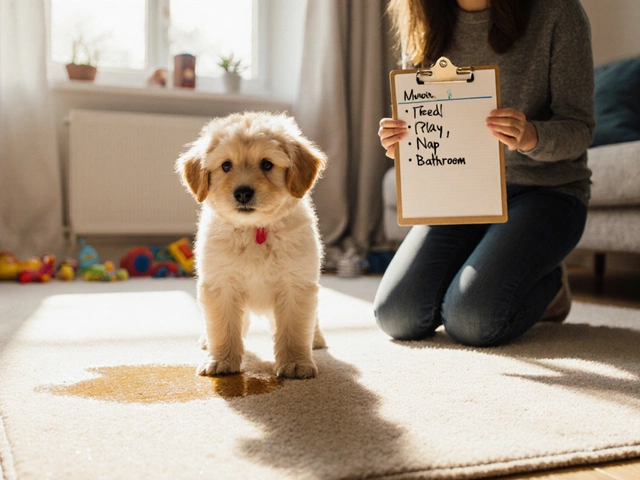Dog Grooming Calming Aid Checker
This tool helps you understand what calming aids your dog groomer may offer based on your dog's stress triggers and your preferences. Select options below to see personalized recommendations.
Your Calming Aid Recommendations
Enter your details and click "Check What Aids Might Be Used" to see personalized recommendations.
When you drop your furry friend at a dog groomer is a professional who provides bathing, hair trimming, nail clipping and other hygiene services for dogs, you want the experience to be as smooth as possible. Many owners wonder whether groomers give dogs anything to calm them down, especially if their pet gets nervous during a grooming session. The short answer is: some do, but it depends on the type of aid, the groomer’s policy, and local regulations.
Why Dogs Get Stressed at the Groomer
Even the most relaxed pup can feel uneasy when surrounded by unfamiliar smells, loud dryers, and strangers handling their fur. Common stress triggers include:
- Noise from clippers, blow‑dryers and water jets.
- Physical restraint - many groomers use a loop or harness to keep the dog still.
- Previous bad experiences, such as a cold bath or a painful nail trim.
- Heat and humidity in the grooming salon.
When a dog shows signs like panting, trembling, whining or trying to escape, the groomer has to decide whether to pause, use a calming aid, or proceed carefully.
Common Calming Options Groomers May Offer
Below are the most frequently encountered aids in professional grooming settings.
- Pheromone diffusers (e.g., Adaptil) release a synthetic version of the dog‑appeasing pheromone that can help reduce anxiety.
- Calming treats or chews containing CBD oil (cannabidiol), chamomile, or valerian root, often marketed as “relaxation bites”.
- Prescription‑only medications such as aprepitant or acepromazine, which a veterinarian must authorize.
- Over‑the‑counter herbal supplements (e.g., L‑theanine, melatonin) that some groomers keep on hand.
- Simple sensory tricks - a calming playlist, low‑level white noise, or a favorite blanket.
Not every salon carries all these options, and the choice often reflects the groomer’s training and the owner’s preferences.
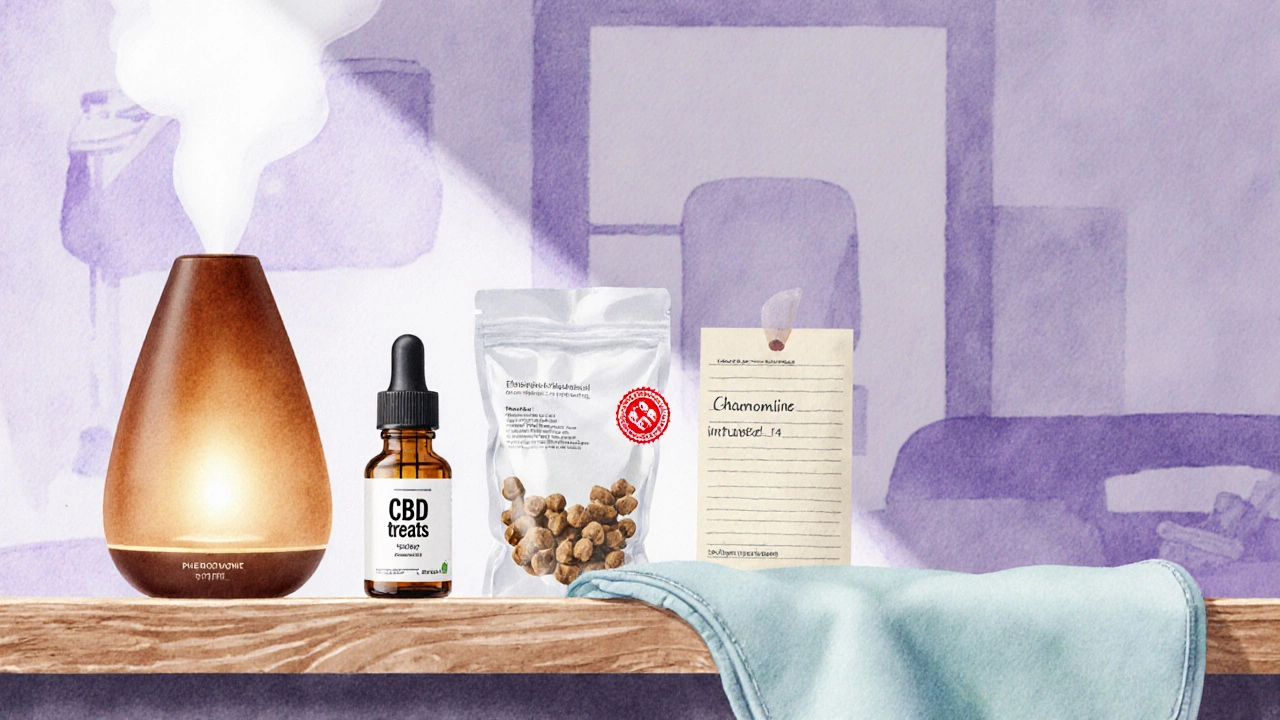
Prescription Medications vs. Over‑the‑Counter Aids
Understanding the difference helps you decide what to request.
| Type | Onset | Duration | Veterinary Prescription? | Typical Dosage | Common Side Effects |
|---|---|---|---|---|---|
| Prescription medication (e.g., acepromazine) | 15‑30 minutes | 4‑6 hours | Yes | 0.05‑0.1mg/kg orally | Drowsiness, lowered blood pressure |
| Vet‑approved CBD oil | 30‑45 minutes | 6‑8 hours | Yes (often recommended) | 0.2‑0.5mg/kg | Dry mouth, mild lethargy |
| Pheromone diffuser (Adaptil) | 5‑10 minutes | Continuous while device is on | No | One plug‑in or spray per session | Rare, generally well‑tolerated |
| Calming treat (chamomile, valerian) | 20‑30 minutes | 2‑3 hours | No | One treat 30‑60min before | Possible mild GI upset |
| Herbal supplement (L‑theanine, melatonin) | 30‑45 minutes | 4‑6 hours | No | 1‑2mg/kg | Drowsiness, rare allergic reaction |
Because prescription drugs require a vet’s go‑ahead, most groomers stick to non‑prescription options unless you bring a note from your veterinarian.
Non‑Drug Techniques Used by Groomers
When a groomer can’t (or you prefer not to) use any ingestible aid, they often rely on behavior‑based tricks.
- Gradual desensitisation: Starting with a brief sniff of the grooming table, then slowly adding a brush, a dry, and finally a full bath over several visits.
- Positive reinforcement: Treats or praise after each step teaches the dog that the process equals rewards.
- Environmental control: Lowering music volume, using a hand‑held fan instead of a loud dryer, and keeping the room temperature comfortable.
- Physical comfort tools: Anxiety wraps or “thundershirts” that apply gentle, constant pressure, similar to a hug.
- Owner presence: Allowing the owner to stay in the room (if the salon permits) can dramatically reduce stress.
These methods are often combined with a low‑dose calming aid for best results.
How to Talk to Your Groomer About Anxiety
Open communication is key. Here’s a quick script you can adapt:
- “My dog gets really nervous when strangers touch his paws. What do you usually do to keep him calm?”
- “I have a prescription for aprepitant. Can we use it, or do you recommend a different option?”
- “Do you have a pheromone diffuser or a calming playlist I could bring?”
- “If my dog shows signs of anxiety, will you pause the session or try a different approach?”
Most groomers will appreciate the heads‑up and will either accommodate your request or suggest a safer alternative.
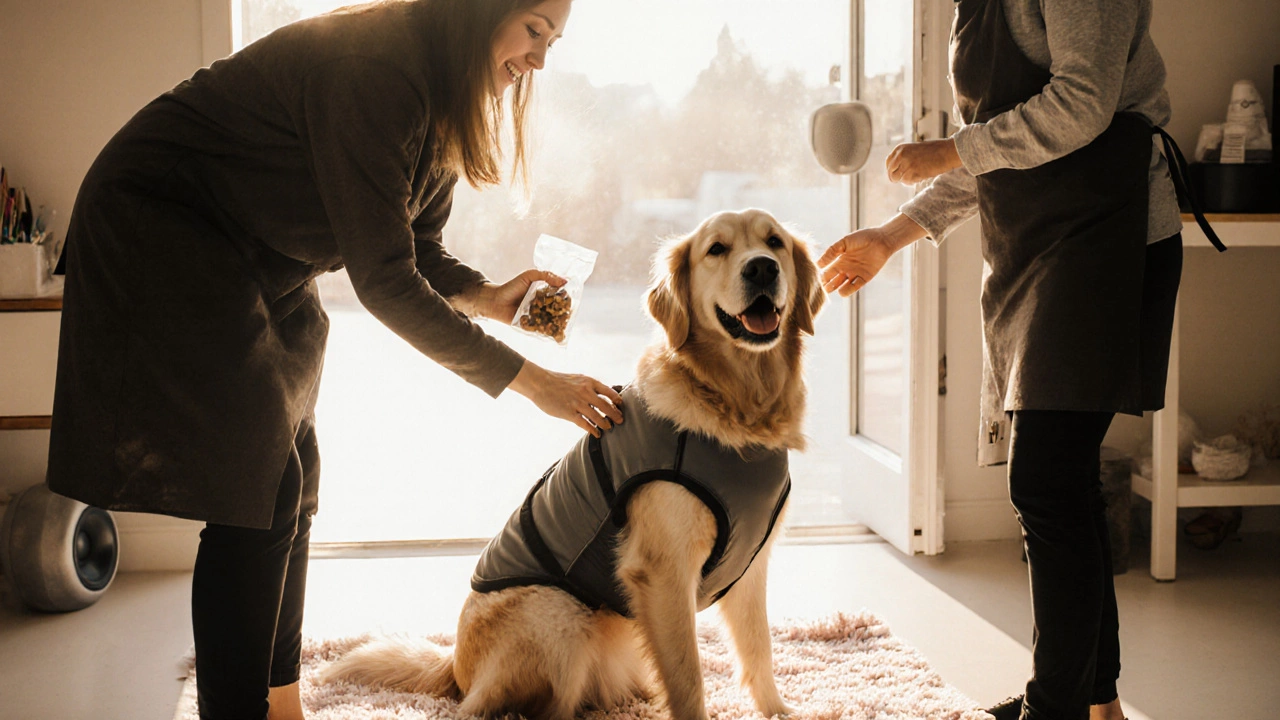
Checklist for a Calm Grooming Experience
- Schedule the appointment during a quieter time of day.
- Ask the groomer about the salon’s calming policies.
- Bring any veterinarian‑approved medication with clear dosage instructions.
- Consider a short walk or play session right before the appointment to expend excess energy.
- Pack a favorite blanket or toy that smells like home.
- Arrive early to let your dog sniff the environment.
- Stay in the room if the salon allows, or be ready to pick up your dog quickly if stress spikes.
Following this list often turns a shaky grooming day into a pleasant routine.
Bottom Line: Do Groomers Give Dogs Anything to Calm Them Down?
The answer is yes-many do-but the exact approach varies. Some salons rely solely on non‑drug techniques, while others keep a selection of over‑the‑counter treats, pheromone diffusers, or even prescription meds (with a vet’s note). The most reliable way to ensure your dog stays calm is to discuss your pet’s anxiety openly, bring any needed medication, and choose a groomer who respects your comfort level.
Frequently Asked Questions
Can a groomer give my dog prescription medication without a vet’s note?
No. In most regions, prescription tranquilizers require a veterinary order. Groomers can only administer them if you provide a signed note.
Is CBD oil safe for dogs during grooming?
CBD oil is generally considered safe for most dogs when dosed correctly (0.2‑0.5mg/kg). However, it should be sourced from a reputable manufacturer and you should check with your vet first.
Do pheromone diffusers work for all dog breeds?
Pheromone products like Adaptil have shown calming effects across many breeds, but individual response can vary. They’re a low‑risk option worth trying.
What signs mean my dog is too stressed to continue grooming?
Watch for rapid panting, trembling, excessive drooling, attempts to escape, or aggression. If you see any of these, ask the groomer to stop and give your dog a break.
Can I bring my own calming treat to the grooming session?
Absolutely. Most groomers welcome pets’ own treats, especially if they are part of a regular routine. Just let the groomer know what’s being given.
